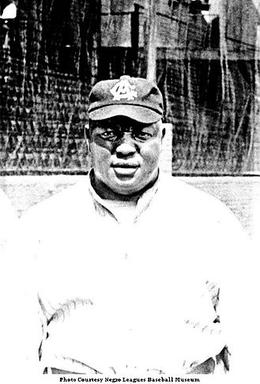
Andrew "Rube" Foster was an American baseball player, manager, and executive in the Negro leagues. He was elected to the Baseball Hall of Fame in 1981.

Joshua Gibson was an American baseball catcher primarily in the Negro leagues. Baseball historians consider Gibson among the best power hitters and catchers in baseball history. In 1972, he became the second Negro league player to be inducted in the National Baseball Hall of Fame.

Burr Oak Cemetery is a cemetery located in Alsip, Illinois, United States, a suburb southwest of Chicago, Illinois. Established in 1927, Burr Oak was one of the few early Chicago cemeteries focused on the needs of the African-American community, it is the final resting place of many black celebrities, including Chicago blues musicians, athletes, and other notables.

James Allen "Candy Jim" Taylor was an American third baseman and manager in Negro league baseball. In a career that spanned forty years, he played as an infielder in the early years of the 20th century for over a dozen black baseball teams; by the mid-1920s, he would play less regularly, with his final game came at 58. In 1920, the same year of the start of the golden era of Negro league baseball, he would take on the responsibilities of manager, where he would manage 1,967 games for twelve teams. Described as one of the great strategists of his era, Taylor is the all-time winningest manager in the Negro league era, having 955 wins along with two Negro World Series titles and one additional pennant in 27 seasons as manager. He has the most seasons managed by an African American manager along with having the seventh most for a manager in the history of baseball.

John "Jimmie" William Crutchfield was a professional baseball outfielder in Negro league baseball from 1930 to 1945.
This list comprises players who have appeared in Negro league baseball.

John Wesley Donaldson was an American baseball pitcher in Pre-Negro league and Negro league baseball. In a career that spanned over 30 years, he played for many different Negro league and semi-professional teams, including the All Nations team and the Kansas City Monarchs. Researchers so far have discovered 718 games in which Donaldson is known to have pitched. Out of those games, Donaldson had over 420 wins and 5,221 strikeouts as a baseball pitcher. According to some sources, he was the greatest pitcher of his era.

Oak Woods Cemetery is a large lawn cemetery in Chicago, Illinois. Located at 1035 E. 67th Street, in the Greater Grand Crossing area of Chicago's South Side. Established 171 years ago on February 12, 1853, it covers 183 acres (74 ha).

An unmarked grave is one that lacks a marker, headstone, or nameplate indicating that a body is buried there. However, in cultures that mark burial sites, the phrase unmarked grave has taken on a metaphorical meaning.
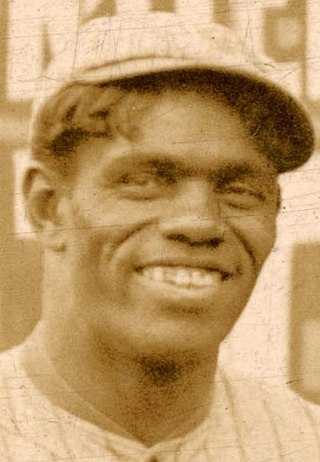
John Preston "Pete" Hill was an American outfielder and manager in baseball's Negro leagues from 1899 to 1925. He played for the Philadelphia Giants, Leland Giants, Chicago American Giants, Detroit Stars, Milwaukee Bears, and Baltimore Black Sox. Hill starred for teams owned by Negro league executive Rube Foster for much of his playing career.
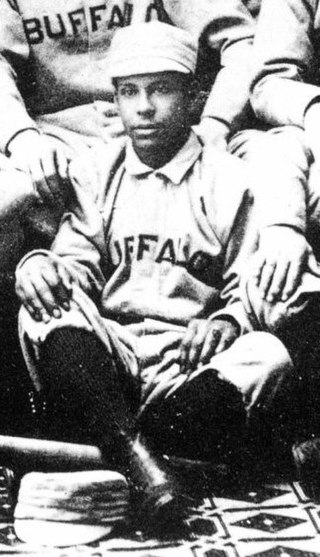
Ulysses Franklin Grant was an American baseball player in the 19th century. Early in his career, he was a star player in the International League, shortly before race-based restrictions were imposed that banned African-American players from organized baseball. Grant then became a pioneer in the early Negro leagues, starring for several of the top African-American teams of the late 19th and early 20th centuries. He is widely considered to have been the greatest African-American player of the 19th century. In 2006, Grant was elected to the National Baseball Hall of Fame.

Lincoln Cemetery is a historically African American cemetery in Blue Island, Illinois, United States. The cemetery is about 112 acres (45 ha) with over 16,000 interments.
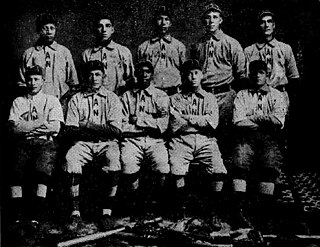
All Nations was a barnstorming professional baseball team that toured the Midwest from 1912 to 1918, and again in 1920 and 1921, and from 1923 to 1925. It derived its name from the fact that its team included players of several nationalities, including blacks and whites, Indians, Hawaiians, Japanese and Latin Americans. The team was founded by the Hopkins Brothers sporting goods stores. One day, however, the team's manager absconded with the daily gate proceeds. J. L. Wilkinson, who played for the team, replaced him as manager, later becoming owner as well. The team was based out of Kansas City and Des Moines.
The Toledo Tigers were a Negro National League team that operated during the 1923 season, its only season in the league, representing Toledo, Ohio. It played its home games at Toledo's Swayne Field, home of the minor league Mud Hens.

William Miller "Big Bill" Gatewood was an American Negro league baseball pitcher and manager for several years before the founding of the first Negro National League, and in its first few seasons. He pitched for the Leland Giants, Chicago Giants, St. Paul Colored Gophers, Chicago American Giants, New York Lincoln Giants, Cuban X-Giants, Philadelphia Giants, Brooklyn Royal Giants, St. Louis Giants, Indianapolis ABCs, Detroit Stars, St. Louis Stars, Toledo Tigers, Milwaukee Bears, Memphis Red Sox, Atlantic City Bacharach Giants, and Birmingham Black Barons.

John Boyce Taylor was the second-oldest of four baseball-playing brothers, the others being Charles, Benjamin, and James. Taylor was an American pitcher and played in professional pre-league and Negro league baseball from 1903 to 1925.
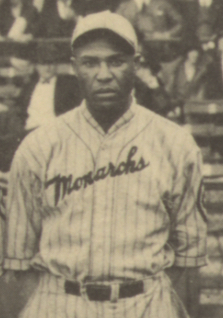
Carroll Ray "Dink" Mothell was a catcher and utility player who played for 15 years in the Negro leagues. Known for his versatility, Mothell played every position. It was said you could use him "most any place, any time."
The Jerry Malloy Negro League Conference (JMNLC) is an annual conference sponsored by Negro leagues Committee (NLC), a standing committee of the Society for American Baseball Research (SABR), a non-profit 501(c)(3) organization. As of 2016, the NLC has held nineteen conferences in various cities known for their history in hosting Negro league baseball teams. The JMNLC is the first and remains the only such event dedicated exclusively to the examination of black baseball history.
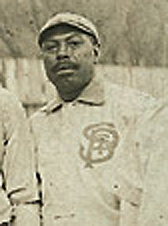
William H. Binga was an American third baseman, catcher and manager in the pre-Negro league baseball era. Born in Michigan, Binga played most of his career in Chicago, Illinois, Philadelphia, Pennsylvania, and Minneapolis, Minnesota.

Henry William Moore was an American baseball utility player in the pre-Negro leagues. He was known as "Harry Moore," "Henry Moore," or "Mike Moore."


















